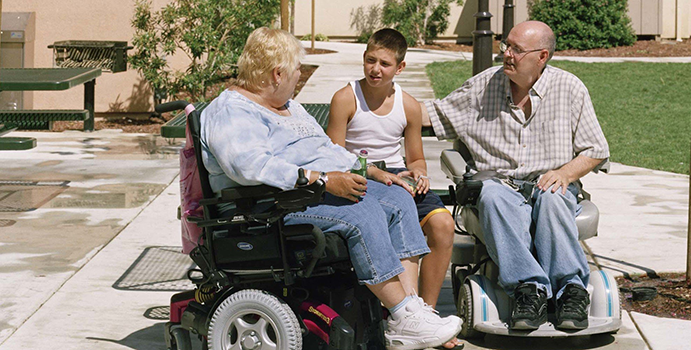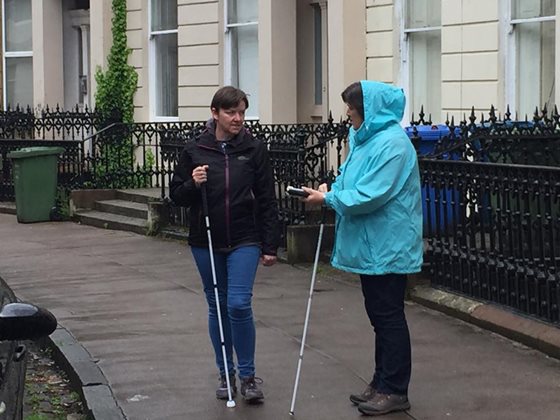
Everyone needs a suitable home. And that need is increasing and evolving every minute, each passing day—in more than just numbers. The U.S. population is growing at an annual rate of 0.7-0.8 percent; according to the 2016 census, the nation’s population now stands at 324 million. That translates to housing needs for an added 2.3 million residents each year—one additional resident every 15 seconds.
But the sheer increase in numbers for people needing housing is just the tip of the iceberg. Lurking below the visibly growing volume of the population iceberg is a sea change that’s happening to our housing needs. A missing element that’s been hiding in plain sight all along now is beginning to surface—the “visitability” of our homes. In other words, how inclusive are we being when designing our homes?
Visitability begins with being mindful of our visitors—knowing who may be visiting and making our homes ready.

- One “no-step” entrance into the main floor.
- Wide doors and hallways, typically with at least 32 inches of clear passage space.
- At least one half-bathroom on the main floor that is wheelchair-accessible.
In the last two decades, awareness of visitability has grown into a well-recognized societal need. Several states and cities across the United States have taken the initiative to codify those needs into laws and ordinances aimed at setting and implementing visitability standards for buildings that receive government subsidies.
Visitability needs, and the laws addressing them, are legally tested and court-approved. For instance, in 2003, the Arizona Court of Appeals recognized the legitimacy of visitability. In a unanimous verdict, the court upheld the Inclusive Home Design Ordinance, a building code adopted by Pima County, Arizona. The ordinance was designed to promote and enforce visitability by increasing the number of homes accessible to those in wheelchairs.
The court recognized that “disability is a growing problem both nationally and locally” and that “Arizona’s population of people over the age of 60 is expected to triple by 2025.” The court acknowledged that “although many of these disabled people will not be confined to wheelchairs,” it can be concluded from those figures that “the number of people confined to wheelchairs is rising.”
The court further recognized that the additional cost of complying with the visitability ordinance is only about $100. Such low costs for visitability in new construction have been demonstrated for several years.
From a broader perspective, visitability is not just about providing accessible housing for the elderly and the disabled. Rather, it is only one step toward universal access. It is about looking at our homes through the eyes of our visitors and in light of their plight.
Viewed that way, visitability is not an exercise in charity. Instead, it is an imperative duty borne of growing necessity. It is a duty we owe to those who visit us in our homes. We discharge that duty by transforming our homes into more accessible, livable and welcoming places.
If home is where our heart is, visitability is using that heart to make our house a home, especially for those close to our hearts.

